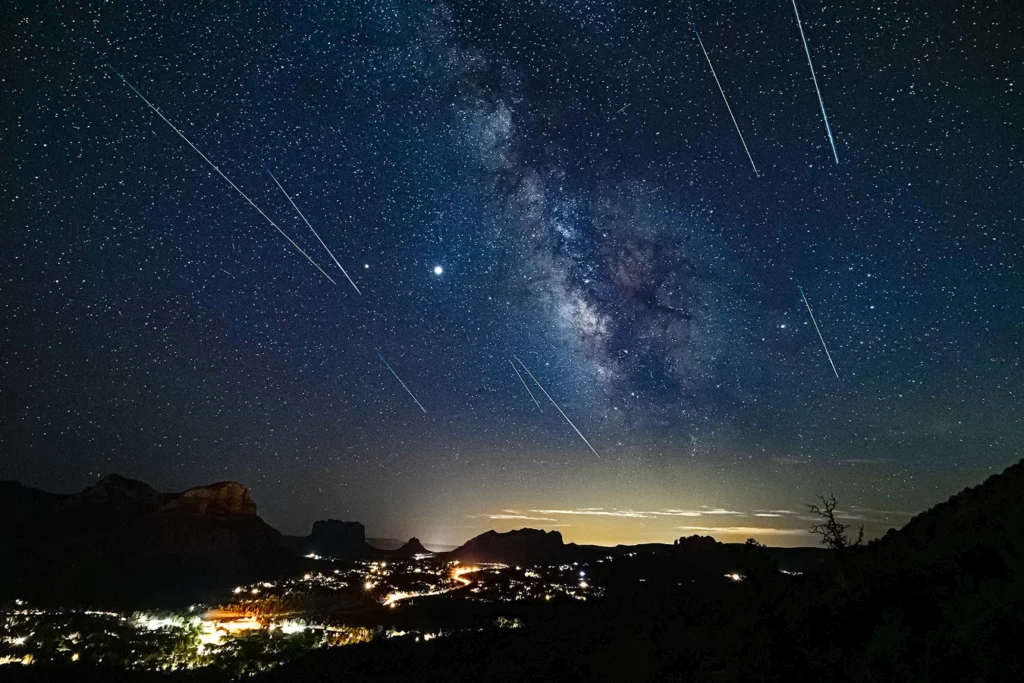The Delta Aquarids is an average shower that can produce up to 20 meteors per hour at its peak. It is produced by debris left behind by comets Marsden and Kracht.
The shower runs annually from July 12 to August 23. It peaks this year on the night of July 28 and morning of July 29. The second quarter moon will block many of the fainter meteors this year. But if you are patient, you should still be able to catch a few good ones.
Best viewing will be from a dark location after midnight. Meteors will radiate from the constellation Aquarius, but can appear anywhere in the sky. Find an area well away from city or street lights. Come prepared with a sleeping bag, blanket, or lawn chair. Lie flat on your back and look up, taking in as much of the sky as possible. Looking halfway between the horizon and the zenith, and 45 degrees from the constellation of Aquarius will improve your chances of viewing the Southern Delta Aquarids. In less than 30 minutes in the dark, your eyes will adapt and you will begin to see meteors. Be patient – the show will last until dawn, so you have plenty of time to catch a glimpse.
Their radiant – the point in the sky from which the Southern Delta Aquarids appear to come – is the constellation Aquarius. The third brightest star within this constellation is called Delta. This star and the constellation are also where we get the name for the shower: Southern Delta Aquarids.
Note: The constellation for which a meteor shower is named only serves to aid viewers in determining which shower they are viewing on a given night. The constellation is not the source of the meteors. The name of a star (Delta) is part of this shower’s name in order to help distinguish it from another meteor shower, the Eta Aquarids, which peak in May.























